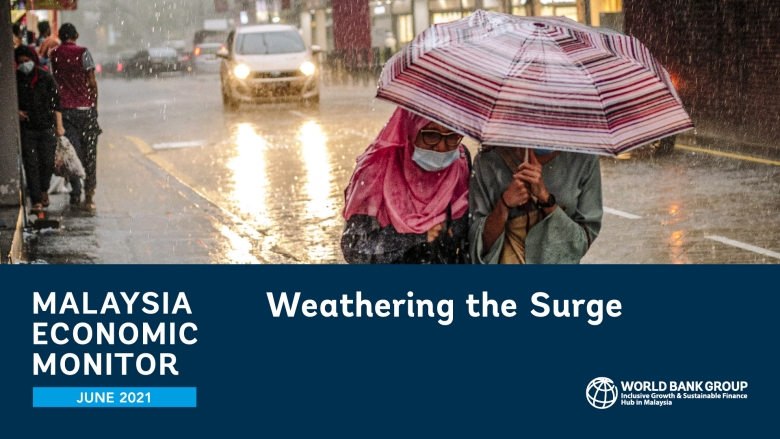Malaysia has seen a resurgence of the COVID-19 pandemic in 2021, affecting households, firms and the overall trajectory of the country’s economic recovery
- Daily new infections averaged 7,000 cases in the last week of May. By the start of June, average case counts and fatality rates outpaced those of regional peers Thailand, Indonesia, Philippines and India, which was the global epicenter for the pandemic earlier in the year.
- Hospitals managing COVID-19 are operating at maximum capacity, with dedicated Intensive Care Units operating above 90 percent.
- The number of vulnerable households is expected to remain elevated or increase.
Rebounding global conditions provides some relief, despite the effects of the pandemic on the domestic economy
- Domestic demand continued its decline in Q1 2021 by -0.9 percent but was cushioned by a relatively lower decline in private consumption at -1.5 percent compared to the previous quarter
- Improving global economic activity further boosted exports which expanded by 18.2 percent in Q1 2021
- Global GDP is projected to expand by 5.6 percent this year and moderate to 4.3 percent in 2022. However, this remains 1.9 percent below pre-pandemic projections
- Malaysia’s economy is projected to grow by 4.5 percent in 2021, lower than initial projections of 6.0 percent reflecting a slower pathway to suppressing the pandemic and slower than expected vaccine rollout.
- Continued movement restrictions are expected to impact private consumption, resulting from slower wage growth and more precautious spending behavior by consumers.
- Business, particularly small firms, face severe revenue shocks during the movement restrictions
- 64 percent of firms reported losses during the second Conditional Movement Control Order (CMCO) from October to December 2020
- The average firm has only 4.9 months of cash flow reserves, much lower than their regional peers
Immediate measures are needed to contain the current wave of the pandemic and recover the country’s trajectory
- Effective find-test-trace-isolate-support (FFTIS) strategies are needed to ensure safe reopening of economic sectors
- Accelerating vaccine rollouts and sustained public communication campaigns will address vaccine hesitancy and improve vaccination rates for all
- Recent momentum in vaccine registrations and expansion of vaccination centers across the country show positive momentum ahead
- Near-term fiscal policy will need to strengthen the health system and provide additional financial support for vulnerable groups
The pandemic highlights the strong necessary reforms needed to ensure the wellbeing of the people including:
- Rebuilding fiscal buffers will be a key concern, providing the impetus to increase revenue collection and enhance spending efficiency
- Increasing the depth of the social protection system to provide a minimum level of protection for all in need has been especially highlighted due to elevated number of vulnerable households seeking assistance
- Improving coordination of targeting approaches and delivery of social protection programs
The private sector will likely be a driver of post-pandemic recovery, necessitating support to boost its resilience against future shocks. Crucial to this is the need for creating better jobs and economic transformation
Measures to achieve this include
- Ensuring clear and accessible programs to provide relief to firms
- Improving predictability of Standard Operating Procedure (SOP) regulations
- Expediting approvals and disbursements of existing loan and grant programs
Towards achieving long-term resilience, measures introduced must first be geared towards increasing firm efficiency. These include:
- Addressing financing constrains for digital adoption
- Improving government assistance programs for small, medium enterprises (SMEs) with better identification of needs of firms
- Developing an enabling framework that provides more efficient and inclusive financial services, particularly to SMEs
In the long-term, structural reforms needed will hinge on connectivity and integration, skills, technology and innovation development and expanding private investments to develop a robust and resilient private sector.
